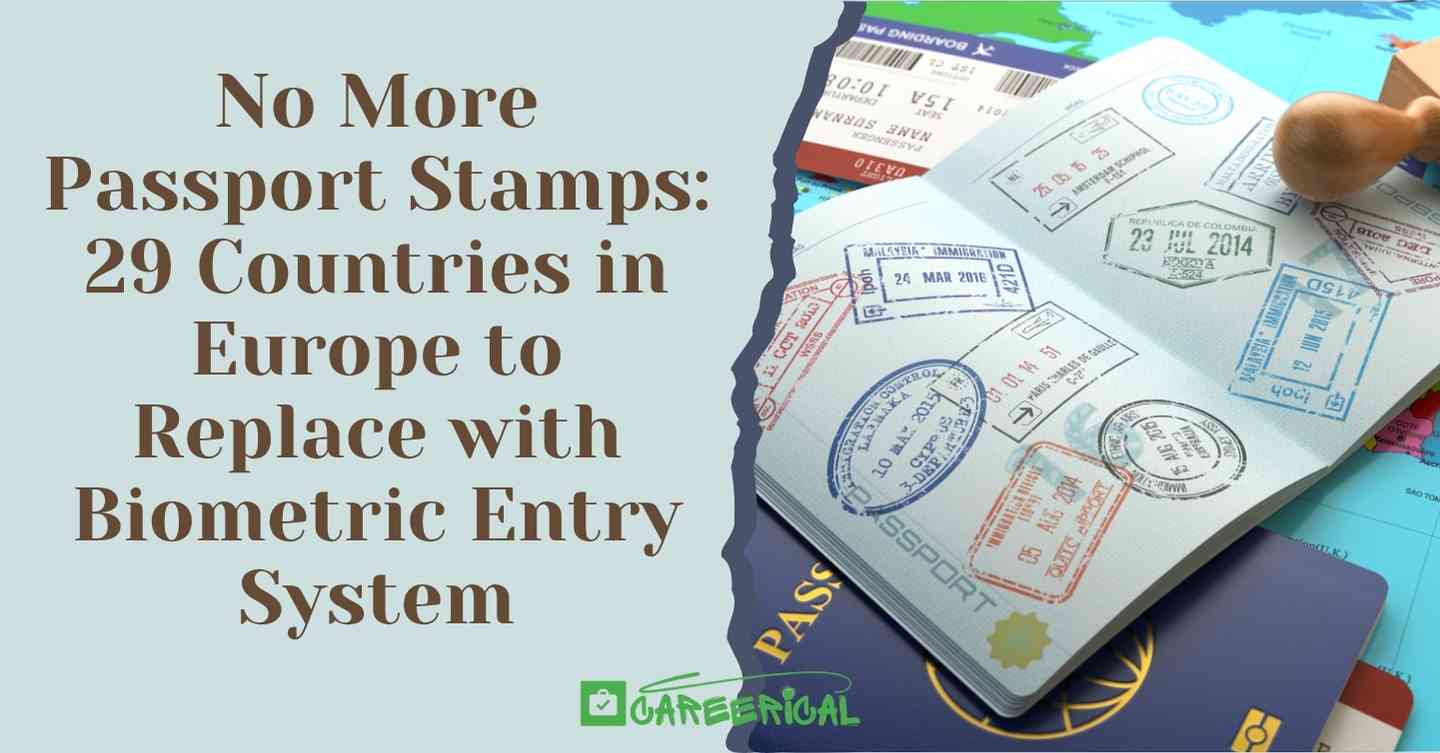No More Passport Stamps: 29 Countries in Europe to Replace with Biometric Entry System
If you’ve ever cherished the inked stamp in your passport as a travel keepsake, your next trip to Europe might feel a little different. Starting October 12, 2025, 29 European countries will begin phasing out traditional passport stamps in favor of a fully digital Entry/Exit System (EES). By April 10, 2026, this system is expected to be fully operational across the Schengen Area.
This shift marks a major milestone in border control modernization, aiming to streamline travel, enhance security, and reduce wait times for non-EU travelers.
What Is the Entry/Exit System (EES)?
The EES is an automated IT system designed to register non-EU nationals entering and exiting Schengen countries for short stays (up to 90 days within any 180-day period). Instead of receiving a physical stamp, travelers will have their biometric data—such as facial scans and fingerprints—digitally recorded at border checkpoints.
The system will log:
- Date and location of entry and exit
- Personal details from travel documents
- Biometric identifiers (face and fingerprints)
This data will help authorities detect overstays, prevent identity fraud, and improve border security across the region.
For official details, visit the European Commission’s Migration and Home Affairs page.
Recommended: From a Visa Officer: 7 Proven Tips to Get Schengen Visa Approval
Why Is Europe Phasing Out Passport Stamps?
Traditional passport stamps are prone to human error and offer limited tracking capabilities. The EES replaces manual stamping with a digital process that:
- Speeds up border checks
- Improves accuracy and data reliability
- Enhances security by identifying overstayers and fraudulent entries
- Supports law enforcement with real-time access to travel records
The move also aligns with global trends. Countries like Australia, Hong Kong, Singapore, and Argentina have already eliminated physical stamps. Even the United States is gradually adopting biometric systems at major airports.
Which Countries Are Involved?
The 29 countries implementing the EES are all part of the Schengen Area, which allows passport-free movement across member states. These include:
- Austria
- Belgium
- Bulgaria
- Croatia
- Czechia
- Denmark
- Estonia
- Finland
- France
- Germany
- Greece
- Hungary
- Iceland
- Italy
- Latvia
- Liechtenstein
- Lithuania
- Luxembourg
- Malta
- Netherlands
- Norway
- Poland
- Portugal
- Romania
- Slovakia
- Slovenia
- Spain
- Sweden
- Switzerland
Note: Ireland and Cyprus are not part of the Schengen Area and are not included in this rollout.
What Travelers Should Expect
If you’re planning to visit Europe in late 2025 or beyond, here’s what to keep in mind:
- Biometric Enrollment: You’ll be asked to provide fingerprints and a facial scan at your first point of entry.
- Self-Service Kiosks: Many airports and land borders will feature automated kiosks to speed up the process.
- No More Stamps: Your passport won’t be stamped, but your entry and exit will be digitally logged.
- Short-Stay Tracking: The system will automatically calculate your allowed stay duration across Schengen countries.
This change applies only to non-EU travelers entering the Schengen Area. Once inside, you can still move freely between member countries without additional checks.
Global Context: A Shift Toward Digital Borders
Europe isn’t alone in this transformation. The UK has introduced its own Electronic Travel Authorization (ETA), and the U.S. continues to expand facial recognition at border control points. These systems aim to make travel more efficient while maintaining high security standards.
Digital borders are becoming the norm, and while some travelers may miss the nostalgia of passport stamps, the benefits—faster processing, better data, and improved safety—are hard to ignore.
Final Thoughts
The end of passport stamps in Europe signals a new era of travel. With biometric systems and digital records taking center stage, border control is becoming smarter, faster, and more secure. If you’re planning a European adventure in 2025 or 2026, prepare for a seamless entry experience—no ink required.
More Opportunities:
- Study in Canada for Free: University of Saskatchewan Scholarships 2026
- 500 Hours to Residency: How to Qualify for the UAE Golden Visa Through Volunteering
- Tier 2 Visa Sponsorship: Care Assistant Jobs in the UK
- Richard C. Malmsten Memorial Foundation Scholarship 2026 at the University of Gothenburg
- 🇨🇭 Visa Sponsored Farm Worker Jobs in Switzerland for 2025


Post Comment